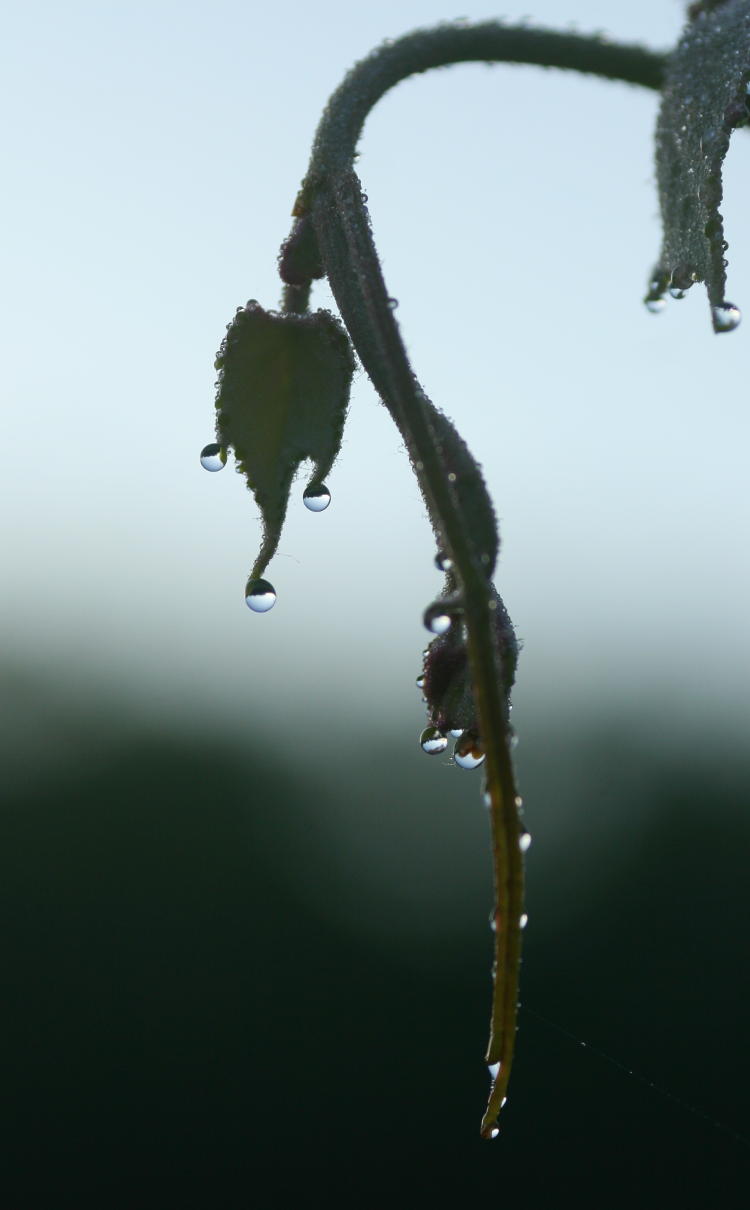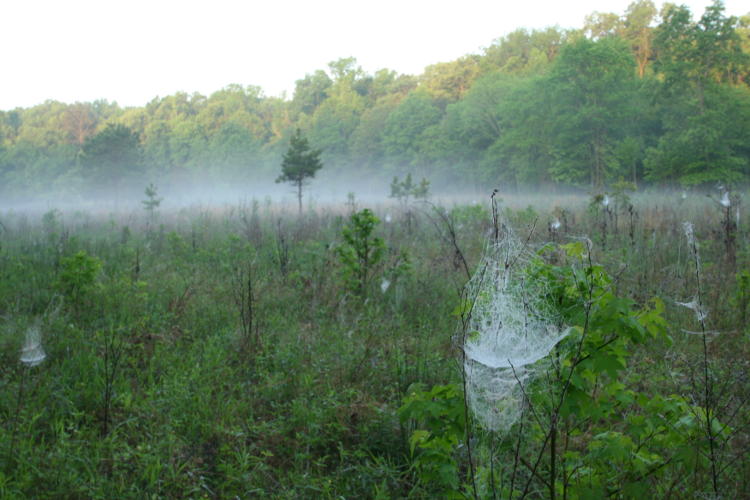
As we continue our quest for currency, not in the monetary sense but in the calendrical, or something, we move up to the beginning of this month, and a sunrise outing during a foggy morning out at Mason Farm Biological Reserve. I need encouragement to move away from mist and dew drops, but seeing as how I have hundreds of photos of other subjects waiting in the wings, I no longer feel as bad about posting these now. I had, in fact, prepared and uploaded all of these to the blog server before leaving on our trip, with the idea that I might perhaps put up a post while out on vacation – and I did, but not this one. I can blame it on time and motivation, and will, but part of the reason was also that there was no desk or chair in our accommodations, and I would have had to type this whole thing from a keyboard balanced in my lap while propped up with an inadequate amount of pillows, and that simply wasn’t happening.
I was also thinking about posting these in honor of International Surface Tension Day, but then I discovered that there is no such holiday, which isn’t a surprise I guess – what a stupid thing to celebrate, you know?

But seeing as how the birds were exceptionally scarce that morning, and no other critters saw fit to fill in for them, we have what we have, and the Irrepressible Mr Bugg and I attempted to make the most of it. Shooting by dim existing light, I opted for f4 from the Mamiya 80mm macro and selected which drops I wanted to remain sharp. These are the kind of conditions and subjects where a macro flash actually works against you, changing the character of the light and colors.
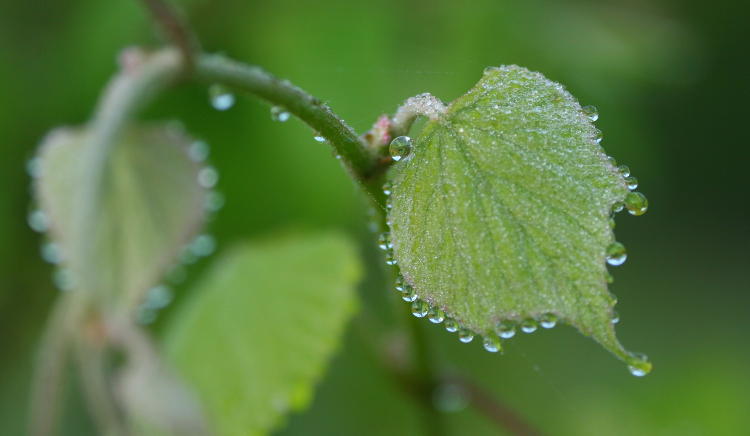
White balance is also something to consider carefully. I recommend only using Auto White Balance in situations where there is mixed lighting or you’re attempting to do away with the color cast from indoor lighting, but choosing the right option for these conditions is tricky too. Technically, the circumstances were “open shade,” and using that setting would keep the images from going too blue, but the light really was a bit blue, and that color cast provides a bit of atmosphere on its own. Sometimes, you stay with the Sunlight setting (essentially no correction) and do what’s needed in an editing program afterward, perhaps muting the blue-grey effect without eradicating it entirely.
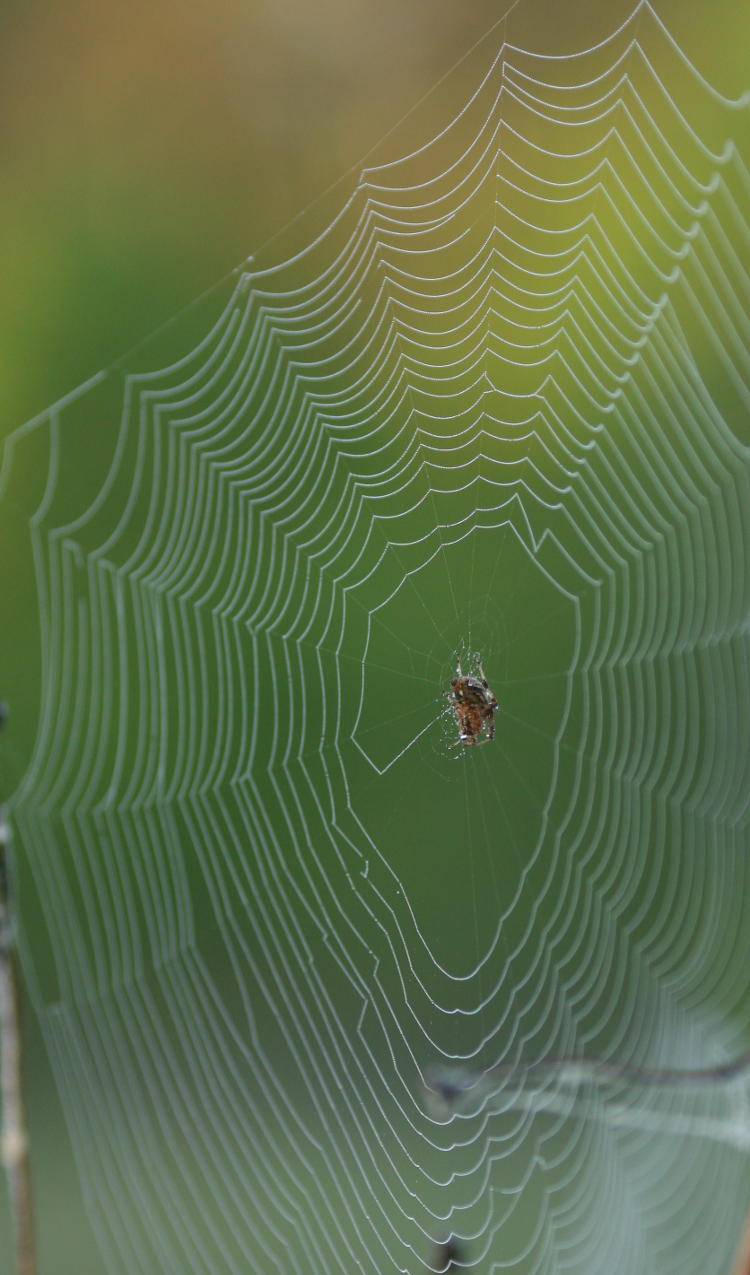
I didn’t get close enough to this species to identify if (I suspect a young barn spider,) but no matter anyway – it’s the curious effect on the orb web that we’re after. My uneducated understanding is, the spiral strands that show up so well here are the only sticky ones, with the radial ‘spokes’ being non-sticky and the ones that the spider itself uses for footing. But their different nature was also attractive to the humidity, making them much more visible in the conditions. And if you ever want to get a good understanding of just how many spiders are around you, a foggy morning does a great job, because so many of the previously-invisible webs are thrown into sharp relief.

In an attempt to be informative (I know, I know, “Why start now?”) I am identifying this as a multiflora rose (Rosa multiflora, duh,) but only among those that won’t hold it against me. The identification, I mean, not the flower itself – you can do what you want with that. As the sun rose above the trees, we had a short period where the dewdrops were brightly illuminated before they evaporated away, and these little blossoms became another short depth-of-field subject. With that, however, sharp focus becomes even more challenging, because the range of focus is millimeters at best, captured during the swaying within the light breeze and my own natural swaying because, hard as it may be to believe, I’m not a robot. There are plenty of frames that I missed, but I won’t tell you about those. Yet, as I stood there, the subject matter changed.
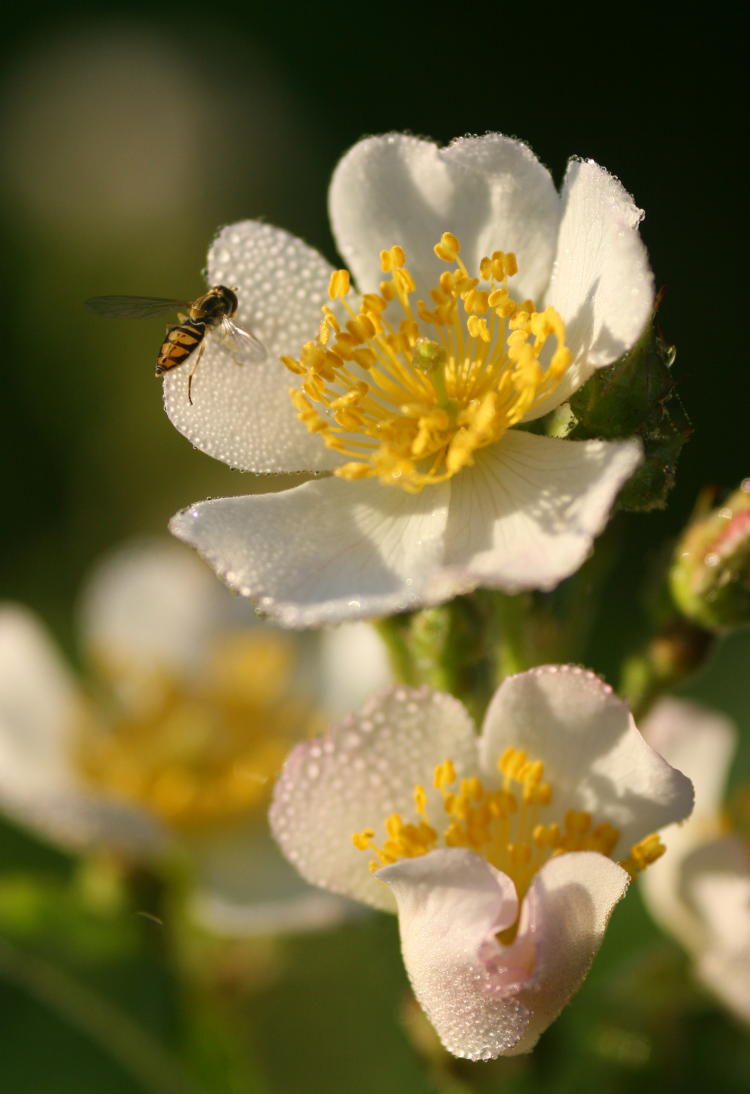
A hoverfly, which I’m not going to bother trying to identify, alighted on the blossom and gave us more to work with, remaining there for quite a while. Near as I could tell, it was after the dew and not nectar or pollen, because it largely stuck to the outer petals. Take a moment and look at the abdomen above, before we go to another perspective to compare against.
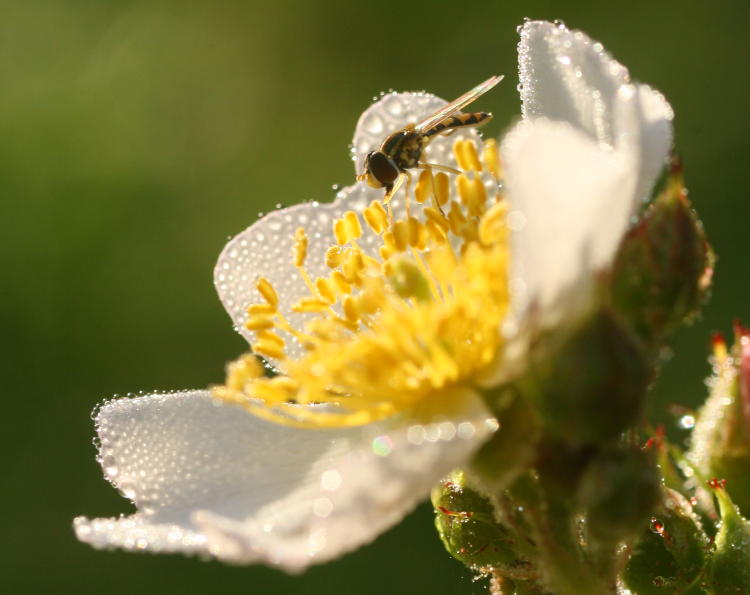
It is still a little early in the season, given how often it got cold again recently, which might explain this emaciated appearance, or it might simply be how this species usually looks – I admit I don’t see them directly from the side too often. Now you know where the phrase, “You eyes are bigger than your belly,” comes from (and I’m probably showing my age with that one – go ask your grandma.)
I’ll close with one of my favorites from the day, just for the contrast. Is this art, or not? I’ll let you decide. I’ll still put it on my wall in either case.
